The Stenocereus Pruinosus succulent is also known by its common name of Gray Ghost Organ Pipe. In addition, it has numerous other biological names, such as Cactus Pruinosus, Cereus Roridus, and Stenocereus Longispinus.
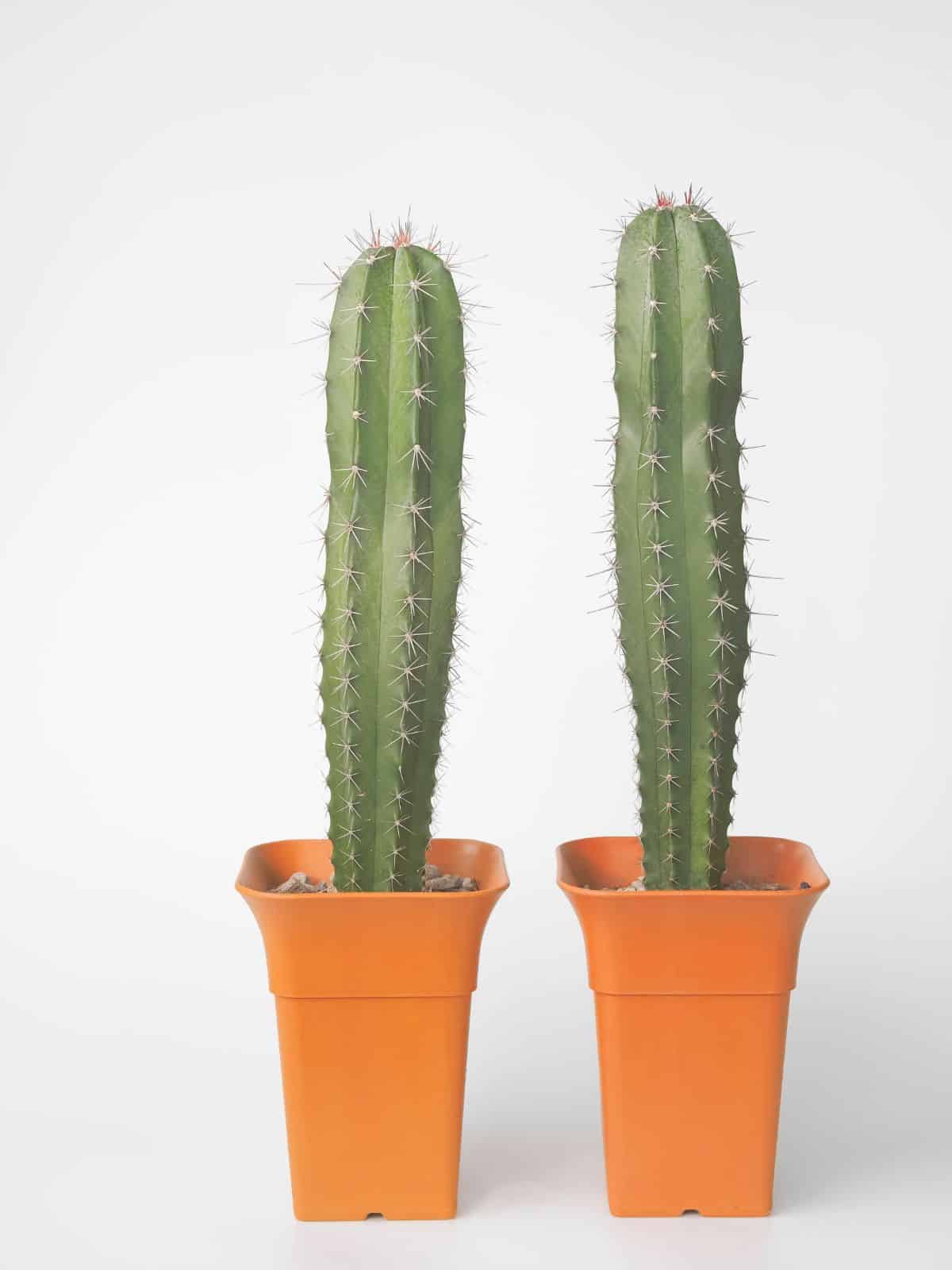
This is an unusual cactus plant, found growing in the wild in certain areas of Mexico. It is commonly found in the states of Oaxaca, Veracruz, and Puebla, where it flourishes at high altitudes.
Being used to an altitude of between 2500 and 3000 feet, it will do well in hot, arid conditions with a dry climate.
Jump to:
Stenocereus Pruinosus Appearance
| Name: | Stenocereus Pruinosus |
| Soil: | Do well in most soil types |
| Blooming: | Second half of summer |
| Light: | Bright sunlight |
| Water: | When the soil is completely dry |
| Propagation: | Stem cuttings |
The Stenocereus Pruinosus was given its nickname of Gray Ghost Organ Pipe because of its grayish-green color. This cactus plant is more like a tree than a shrub. It grows vertically, extending upwards, rather than along the ground.
It has a central columnar trunk that is thick and sturdy, with smaller branches that extend upwards from its sides. It resembles a candelabra in shape. Because it grows fairly rapidly, it can eventually develop many new branches.
The Stenocereus Pruinosus is a relatively big cactus. In its natural habitat in the wild, it can reach a height of about 18-20 feet, with a width of about 10 feet. When cultivated as a garden plant, it is usually a lot smaller, reaching a maximum height of about 6 feet.
However, if you plant this succulent outdoors and give it a lot of space, in the right conditions it can reach almost the same dimensions as it does in the wild. When it is given the right amount of water and direct sunlight, it can reach an impressive 16-18 feet in your garden.
The young Stenocereus Pruinosus plant has between 5 and 8 deep ribs along each trunk. These deep ribs have spines that start out in varying shades of brown, and sometimes light red. Eventually, the ribs tend to flatten out, and they lose their deep color, turning pale green or white.
The Stenocereus Pruinosus is quite unusual in the way it blooms. It develops a small purple and white flower, shaped like a funnel and between 2.5 and 3.5 inches wide. The flowers usually emerge from the tips of the stems.
With most plants, the flowers open during the day, because of their response to sunlight, and close at night. The flowers of the Stenocereus Pruinosus do the opposite. They open early in the evening, as the sun is setting. They remain open throughout the night, and close almost completely during the day, remaining only very slightly open during daylight hours.
This cactus bears an oval-shaped fruit that is about 3 inches in length. The fruit ranges in color from yellow to orange and occasionally even purple. The fruit is edible but has a sharp, sour flavor.
Caring for the Stenocereus Pruinosus
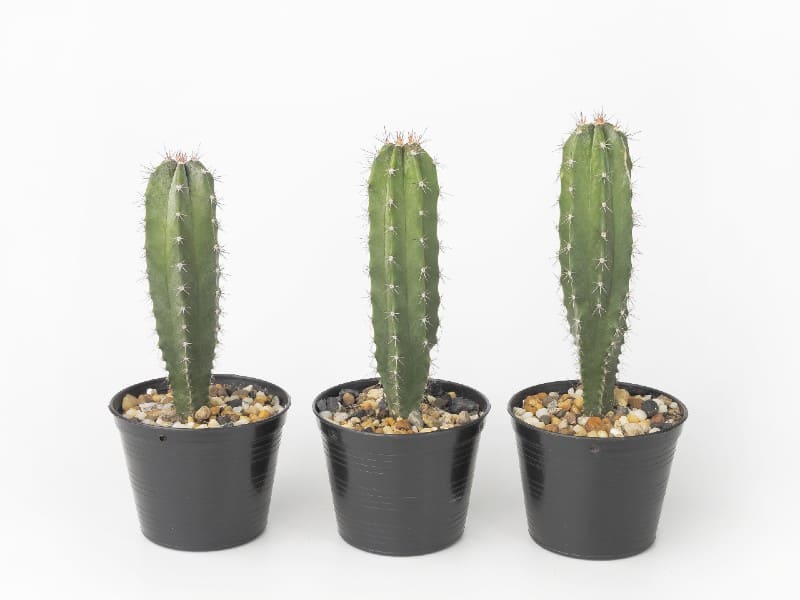
Buy it from:
The Stenocereus Pruinosus is not a difficult plant to cultivate. It does not need much attention or care. As long as its needs for sufficient sunlight and the right amount of water are met, it should thrive without much nurturing.
Light
The Stenocereus Pruinosus is used to a lot of direct natural sunlight. If you are planting this succulent in your garden, choose a spot that gets about 6 hours of direct sunlight per day, with some dappled shade from surrounding trees and shrubs.
Although the Stenocereus Pruinosus is more suited to being planted outdoors because of its large size, it can also be grown in a pot and kept as an indoor house plant. The pot will contain the spread of the roots, and restrict the growth of the plant.
When cultivating this succulent as an indoor plant, select a room in your house that faces the sun and gets lots of direct natural light. If you are in the northern hemisphere, this would usually be a south-facing room, where your Stenocereus Pruinosus will be quite happy on a sunny window sill.
If you do not have a room with sufficient sunlight, it is possible to supplement the natural light by means of a grow light. This is an electric light designed specifically for horticultural purposes.
No products found.
All plants need a certain amount of natural light in order to undergo the process of photosynthesis, whereby they produce chlorophyll, which feeds and nourishes the plant. Without sufficient chlorophyll, the plant will die.
The grow light mimics natural light, allowing the plant to continue to produce enough chlorophyll through the process of photosynthesis. These lights are readily available at most garden centers and nurseries.
Water
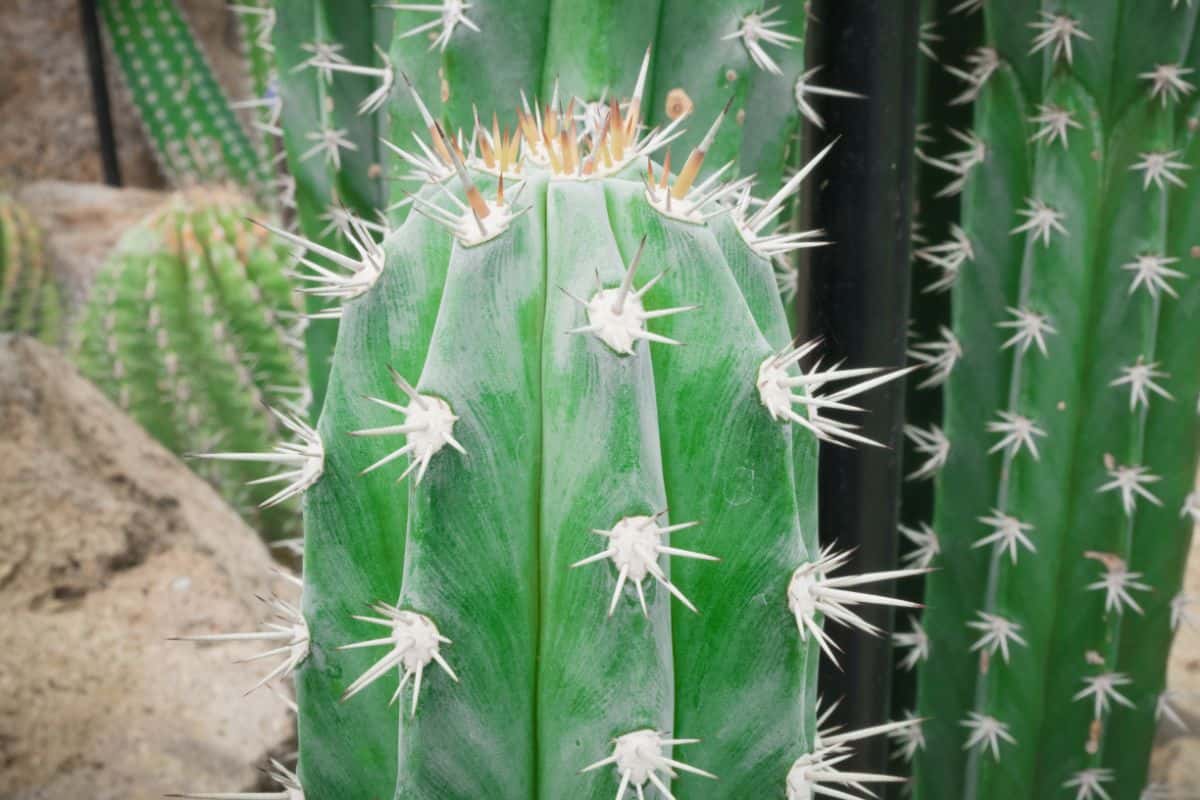
The Stenocereus Pruinosus is a desert cactus, native to very dry areas. Therefore it is quite drought resistant and does not need much water in order to survive.
This succulent is dormant through the winter months, during which time it only needs to be watered very occasionally.
During its growth period, through the spring and summer seasons, it needs a little more water. It should be watered once a week to every 10 days. Water deeply, allowing the plant to absorb sufficient water through its roots.
After watering, the Stenocereus Pruinosus should be left until the soil has dried completely before being watered again. There is a danger of overwatering. If the soil is constantly damp, the roots may start to rot. This can be very harmful to the plant.
In order to test if the plant needs to be watered, insert a long wooden skewer into the surrounding soil. If it is completely dry when removed, it is safe to water. But if it is still slightly damp, wait a day or two before checking again.
If you are planting your Stenocereus Pruinosus in a pot, always ensure that the pot has good drainage holes at the bottom, so that excess water can run off freely.
Temperature
Like most other species of cactus, the Stenocereus Pruinosus is used to a hot climate, due to conditions in its native areas. It likes heat. It is not very cold hardy, and will not be able to survive temperatures below 25° Fahrenheit.
The Stenocereus Pruinosus should only be planted outdoors in areas that have very mild winters. It cannot tolerate icy temperatures where the ground freezes. If you live in an area with a colder climate, it is advisable to plant your Stenocereus Pruinosus in containers that can be brought indoors during severe weather.
This succulent should not be exposed to frost. The ice crystals will settle on the leaves and cause them to freeze. They will turn soft and limp. It is very difficult to revive them after such exposure.
If frost is expected overnight, your Stenocereus Pruinosus should either be taken indoors or covered lightly with a loose piece of cloth to protect it from the ice.
If your Stenocereus Pruinosus is an indoor plant, it should be kept in a room with a constantly warm temperature. It does not like sudden, drastic changes in temperature. The ideal temperature is between 65°-80°.
Soil
The Stenocereus Pruinosus will do well in most soil types. The pH level of the soil is not terribly important, as long as it is not too extreme. This succulent will grow well as long as the soil pH is anything between 5.7 - 7.7.
It is more important to ensure that the soil is well-aerated. This will help to facilitate good drainage in the soil. When soil particles are too thick, they tend to stick together in thick clumps, preventing water from running off.
If excess water is not able to drain away adequately, the soil will eventually become waterlogged. This will result in the roots being constantly wet, causing them to rot. Root rot can potentially kill your succulent.
The soil should be made up of a combination of cactus potting soil and mineral grit, in a ratio of 1:1. The mineral grit will help to prevent the soil particles from clumping together and retaining water.
Mineral grit is available from most garden centers and nurseries. There are 3 main types of mineral grit. You can use any of the following three substances, or a combination of all three.
- Coarse sand
This is sand that is made up of coarse granules, which allow for air to filter between the individual grains of sand. As a result, water is able to flow freely through the sand. When mixed with cactus potting soil, coarse sand is an excellent medium for good drainage.
- Pumice
Pumice consists of tiny particles of natural stone that have been ground and processed into a fine sand-like substance. Because it is non-absorbent, water flows freely around the particles of pumice. When combined with cactus potting soil, pumice provides an effective channel for excess water to drain away.
- Perlite
The volcanic minerals that are the basis for perlite are known to have a high water content. In combination with cactus potting soil, perlite assists effectively with water drainage, while also helping to keep the roots of the plant hydrated.
It can also be beneficial to mix in some leaf mulch with the soil. Leaf mulch helps the soil to maintain a good moisture balance, reducing the need for frequent watering.
If you mix leaf mulch in with the soil, it can help to inhibit the growth of weeds around your succulent. This can make a significant difference to the overall health of your plant, as you will not need to use weedkillers and herbicides as often. These can sometimes affect the surrounding plants, which should be avoided.
Leaf mulch basically consists of dead leaves. The dead leaves are full of nutrients that are essential for healthy plant growth, so adding them to the soil can help to nourish the plant. Leaf mulch is also useful in preventing soil erosion around your succulents.
Fertilizer
While it is not essential to feed your Stenocereus Pruinosus with fertilizer, it will help to boost its growth if you give it some fertilizer in carefully measured doses. The best fertilizer to use is one that is designed specifically for cactus plants. There are many different brands available.
When applying the fertilizer, it should be diluted in equal parts with water and administered to your Stenocereus Pruinosus once every 2 months.
This succulent should only be given fertilizer during the growing period, in the spring and summer months. It should not be administered to the plant during its dormant period throughout winter.
If you follow all of the above guidelines for caring for your Stenocereus Pruinosus, It should grow fairly rapidly. If it is in a pot, it will need to be repotted regularly. See our guide for repotting towards the end of this article.
Propagating the Stenocereus Pruinosus
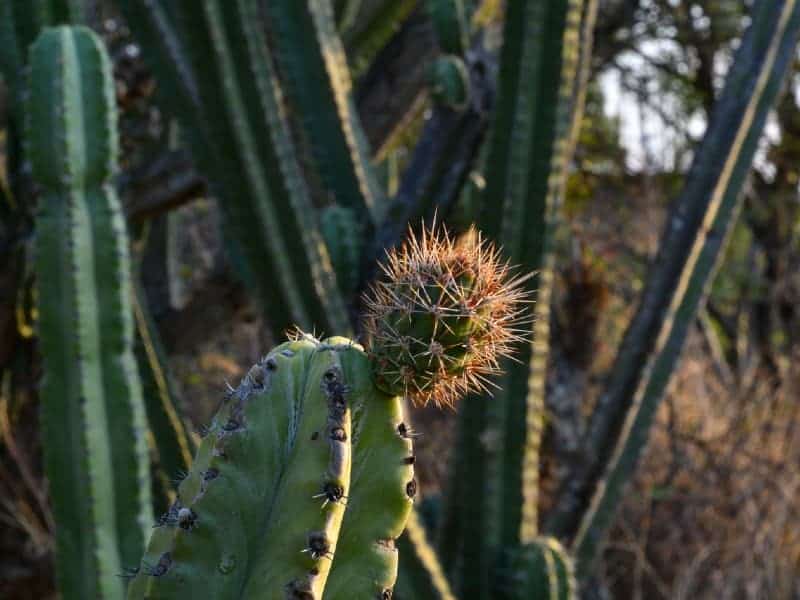
The best method to use for propagating the Stenocereus Pruinosus is by taking a stem cutting. When cutting a piece off, always use a clean, sharp scissors or a knife.
If your utensil has dirt on it, you risk introducing bacteria to both the offcut and the mother plant. This can cause infection in the plant. If the cutting becomes infected, it will fail to take and you will not be able to grow a new plant from it.
If your knife or scissors are not sharp enough, it will be difficult to make a quick, clean cut. You may have to hack at the stem, which will damage both the mother plant and the cutting, affecting their growth.
To propagate the Stenocereus Pruinosus from a cutting, follow this step-by-step guide.
- Cut a healthy-looking stem, as close to the base as possible.
- Allow it to dry for a few days until a callus has formed over the cut edge.
- Insert the callused cutting in a pot of prepared soil.
- Gently compact the soil around the cutting, using the palms of your hands to flatten the soil evenly around the base.
- Leave it to settle for a few hours, then give it a light sprinkling of water.
- Continue to water lightly every 2-3 days, until it has taken and is growing well.
- You can then start to gradually reduce the watering schedule, according to the watering guidelines given above.
Common pests and problems with the Stenocereus Pruinosus
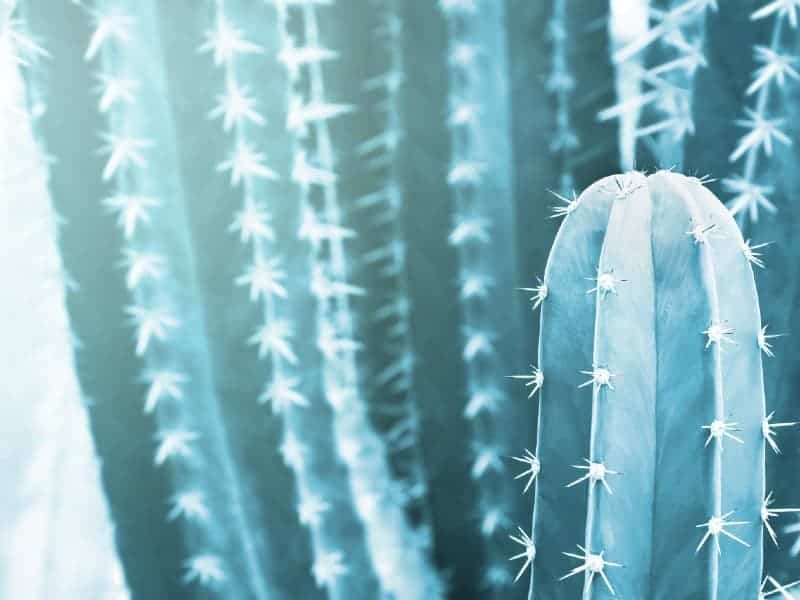
When cultivating the Stenocereus Pruinosus, the most common problems that you are likely to encounter are insect infestation and overwatering.
Insect infestation
Like most other succulent plants, the Stenocereus Pruinosus is prone to infestation by mealybugs. These tiny insects are serious pests that can cause severe damage to your plant over a period of time.
It is important to check your cactus plants regularly for mealybug infestation. The insects are so small that you will not notice them immediately. However, they leave a distinct tell-tale sign of their presence.
If you see a fine, white powdery substance on the underside of your plant, it is most likely infested with mealybug. If you look carefully in the folds and crevices at the joins, you will see the actual insects.
There are many organic remedies that people recommend, but the only really effective method of eliminating these pests completely is by using a commercial pesticide. If you do not eliminate them fully, they will keep coming back and will continue to devour your plant.
Overwatering
Many people assume that too little water will eventually kill a plant. While this is usually true, succulents are far more likely to suffer damage from too much water than from too little water. The Stenocereus Pruinosus is used to dry conditions, and cannot tolerate an excess of water.
In order to prevent problems caused by overwatering, it is recommended to follow the watering guidelines given above.
When planting the Stenocereus Pruinosus in a container, it is vital that the container should have adequate drainage holes at the bottom. If there are insufficient holes, water will not be able to escape.
If the succulent’s roots are constantly left to sit in wet soil, they will start to rot. Root rot will eventually kill the plant.
If you suspect that your plant has developed root rot, it might still be possible to save the plant if you catch it early enough. If the leaves or stems are starting to go soft, and the plant is looking limp and weak, the roots could be rotting.
Carefully remove the plant from the pot, and shake off all soil that remains around the roots. If the roots look like they are turning black, they are starting to rot.
Using a clean, sharp knife, carefully cut away the blackened parts of the roots and rinse the healthy roots with clean and fresh water. Wash the pot out well to remove any traces of fungus and repot the plant in new, clean soil.
Repotting the Stenocereus Pruinosus
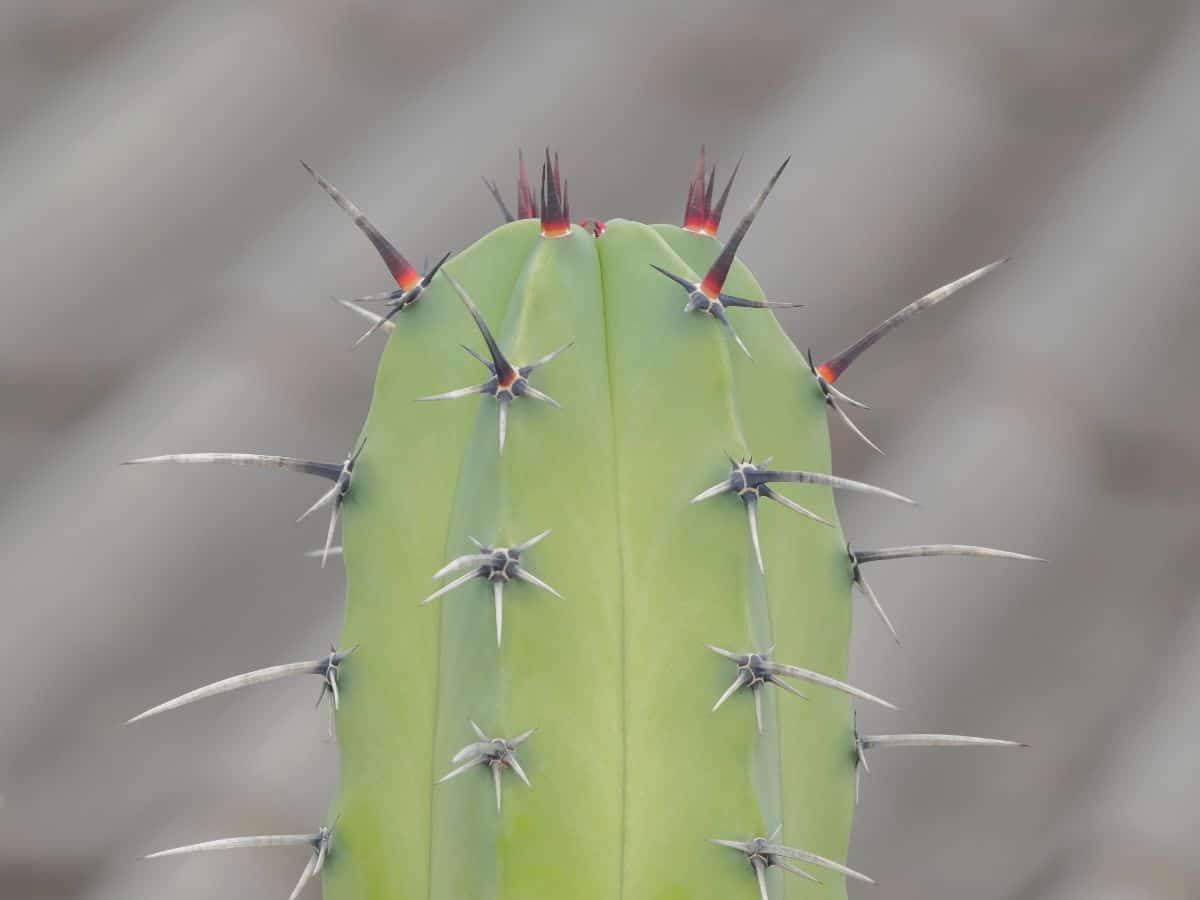
The Stenocereus Pruinosus is a fast-growing cactus. If you have planted it in a container, it will need to be repotted at least every two years. If you want to encourage growth and allow it to get really big, it can be repotted annually.
- Knowing when to repot
When small root hairs start to become visible through the drainage holes at the bottom of the pot, the plant is starting to outgrow the pot and needs to be given more space.
Roots emerging through the surface of the soil around the base of the plant are another indication that the plant is getting too big for its container and needs to be given more space.
- What type of pot to use
Metallic containers such as those made of cast iron or tin will eventually start to rust. The mineral constituents in the soil can be affected by rust, and this can damage the plant.
Ceramic pots, or plastic containers, will not rust or cause any changes to the mineral balance in the soil. Therefore it is preferable to use ceramic or plastic containers.
- Selecting the pot size
The roots of the Stenocereus Pruinosus tend to remain fairly shallow. They do not need deep soil. It is advisable to use a pot that is not too deep, to start off with.
The pot should be just the right size to contain your succulent comfortably but snugly.
While it may be tempting to use a larger pot in order to save yourself the effort of repotting as the plant grows, this is not recommended. If your plant is in a bigger pot, you may fall into the trap of overwatering, which can be fatal.
It also does not look very nice if the pot is too large for the plant. It is far more aesthetically appealing to have harmony between plant size and container size.
- Protecting your hands from the thorns
The little thorns on the Stenocereus Pruinosus can be very painful, particularly if they pierce your skin. They are also very prickly to the touch and can make it very uncomfortable to handle the plant.
When repotting your Stenocereus Pruinosus, it is essential to use something to protect your hands. Thick gardening gloves that cannot be penetrated by the thorns are recommended.
If you do not have gardening gloves, you should use an old towel or a piece of thick fabric to wrap gently around the plant in order to handle it without getting thorns stuck in your hands.
- A step-by-step guide to repotting
- Fill the new container up to halfway with potting soil mix.
- Carefully place the plant in the pot.
- Fill the pot to the top with potting soil, compacting it gently with your hands. The roots should be completely covered
- Leave the plant to stand for a few hours before you water it.
- The first time that you water your newly potted Stenocereus Pruinosus, it is advisable only to water it very lightly, with a soft spray of water.
- Allow the plant to settle fully by leaving it to stand, with no further handling, for the rest of the day.
- The following day you can water your succulent more deeply, giving it a thorough soaking.
- You can now keep following the watering guidelines given earlier in this article.


